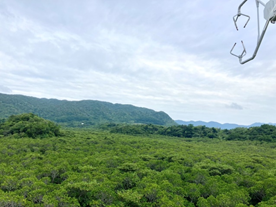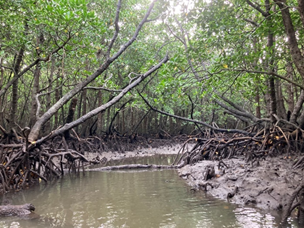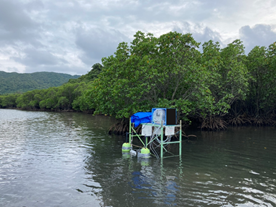Filed survey on Fukido River mangrove in Ishigaki Island
With the cooperation of the Port and Airport Research Institute, Nakamura (D1) and Phyo (M2) have started to study carbon dioxide sequestration and emission by mangrove forests. In August 2021, they conducted a one-month field survey in the mangroves of the Fukidori River in Ishigaki Island.

Fukido River mangrove in Ishigaki Island
Mangrove forests are said to have a high carbon sequestration capacity due to carbon sequestration by photosynthesis and the deposition of organic matter by complex above-ground roots. The carbon sequestration is also promoted by the fact that the soil is always in a reducing state due to the high organic matter content, and the rate of soil decomposition is slower than in terrestrial forests.

Mangrove creek

Continuous observation of water quality, including continuous measurement of CO2 in surface water and air just above the water surface.
Although mangrove forests are expected to serve as carbon sequestration sites, it is known that the concentration of CO2 in the water flowing out of mangrove forests into the sea is about 10 times higher than that in ordinary seawater during a low tide. The runoff from the mangrove forests is transported to the open ocean via coral reefs.
Japan is located at the northern limit of mangrove forests, which is different from mangrove forests in the tropics of Southeast Asia and South Asia, and there is not enough research on mangrove forests in Japan. In the future, we would like to grasp the whole picture of blue carbon in mangroves in Japan by quantitatively understanding carbon absorption and emission.


